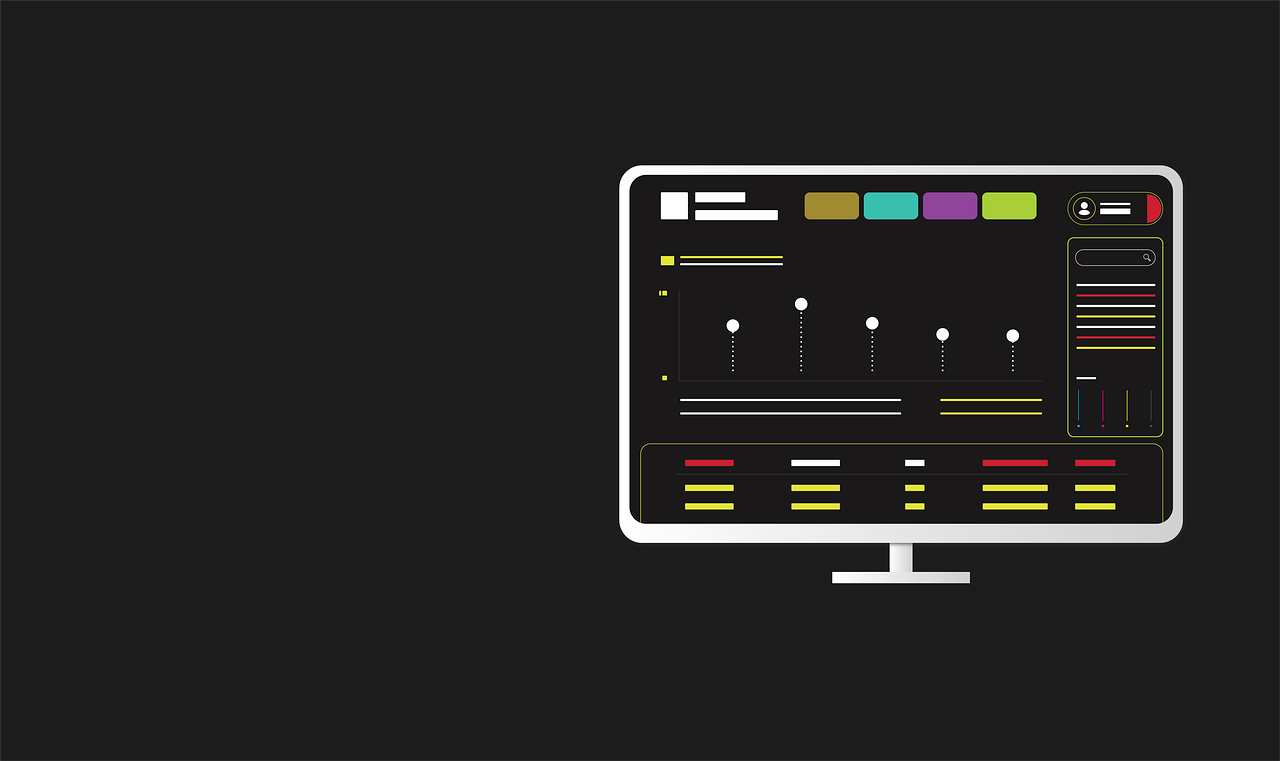In this post, I will outline the steps you need to take before ordering banking and financial software development.
Most successful businesses worldwide use finance apps nowadays. That’s because such applications allow for improving your workflow significantly. This, however, is fair only if one orders banking and financial software development services from reputable IT companies (like Keenethics).
Moreover, experts recommend performing certain things before ordering the mentioned assitances to make the app-making process more rapid. Let’s examine those things in more detail.
Table of Contents
What to Do First Before Ordering Banking and Financial Software Development?
Initially, one should determine their goals. This helps you develop clear requirements for a finance app you’d like to have.
Hence, it will also be easier for developers to understand their tasks and create the necessary features to implement them into financial software.
Such an approach minimizes the amount of further rework and, consequently, shortens the project timeline.
Analyze Your Competitors’ Finance Applications
Experts recommend searching for banking apps they like online. After you find such software, conduct a little analysis. This, for example, implies the following:
- Explore the available functions. Consider whether all the features you want are in the app, and what options should be added.
- Rate the interface’s user-friendliness. Are important sections and buttons placed in prominent places? Does it take long to understand the basic principles of the application?
- Pay attention to application performance. Are there any lags or freezes? This step is especially important, as banking app operation errors may lead to hefty financial losses (yours and your clients’).
Lastly, experts advise choosing a preferred type of finance application design. Here, it is essential to keep in mind that products with attractive appearances not only represent your corporate style but also attract more prospects and better retain existing clients.
For instance, McKinsey claims companies investing in product design grow twice as fast as their rivals.
READ ALSO: What To Do If You’ve Been Scammed Online: A Comprehensive Guide
Pick Platforms for Your Banking Software
This means you should decide what versions your app will have. Here, one needs to pay attention to the following things:
- Mobile/desktop applications should be compatible with the OS you need. This may be iOS or Android for gadgets as well as Windows, Linux, macOS, etc., for PCs.
- Users have to be able to easily install and launch your desktop/mobile app, even on old and low-cost computers, together with gadgets. Therefore, the software should be lightweight.
- Web versions have to adapt properly to both desktop and mobile online browsers.
When picking suitable platforms, consulting with experts is better. You may get a comprehensive consultation on this topic, e.g., at keenethics.com.
How to Choose a Reliable Banking and Financial Software Development Company
Trustworthy IT agencies always work under official licenses issued by authoritative organizations. Moreover, reputable developers typically sign contracts with their clients. Honest agreements usually contain the things as follows:
- Clear cooperation conditions. This implies the rights and obligations of the parties, the final project’s price, and the deadline.
- An algorithm of actions if unforeseen circumstances appear. The latter helps minimize negative consequences in cases of force majeure.
- Exhaustive information about the parties to the contract. This involves their names, contact information, payment details, and other relevant details.
Agreements shouldn’t contain empty lines or fields, equivocal statements, or hard-to-read inscriptions. Furthermore, agreements should be sealed.
View the Picked Developers’ Portfolios
Commonly, trusted IT companies have comprehensive lists of projects they’ve completed. Experts recommend selecting agencies with portfolios that include software developed for well-known firms. This is a sure sign that the developers can be trusted.
Check the Chosen Developers’ Reputations
The simplest way to do this is to view the feedback from an IT agency’s clients on their corresponding websites. Additionally, you can also find developers’ social media accounts and review consumer comments there.
Before Ordering Banking and Financial Software Development: FAQs
What do I need to do before ordering banking software development?
- Define your needs: Clearly identify the specific functionalities and problems your software should solve.
- Conduct market research: Analyze existing solutions, assess features, and compare pricing models.
- Understand regulations: Comply with relevant financial and data security regulations (e.g., PCI DSS, GDPR).
- Set a budget: Determine a realistic budget for development, ongoing maintenance, and potential licensing fees.
- Prepare data and infrastructure: Ensure your systems are ready to integrate with the new software.
- Assemble a team: Consider internal IT expertise, security specialists, and external developers.
How do I choose a software development company?
- Look for experience: Choose a company with expertise in banking and financial software development.
- Evaluate security practices: Ensure they prioritize data security and have strong security protocols.
- Check references and reviews: Speak with past clients and research online reviews to verify credibility.
- Consider communication and collaboration: Choose a company with which you can communicate effectively throughout the development process.
- Get quotes and compare proposals: Compare features, pricing, and development timelines from multiple vendors.
What are the key features to consider in banking software?
- Security: Robust data encryption, access controls, and intrusion detection systems.
- Compliance: Adherence to relevant regulations and industry standards.
- Scalability: Ability to handle growing user base and data volume.
- Integration: Seamless integration with existing systems and infrastructure.
- User-friendliness: Intuitive interface for both employees and customers.
- Reporting and analytics: Comprehensive reporting tools for financial insights.
What are the typical costs involved in banking software development?
Costs vary significantly based on the complexity of features, chosen development approach (custom vs. off-the-shelf), and vendor selection. Expect to consider initial development, ongoing maintenance, licensing fees, and potential infrastructure upgrades.
READ ALSO: 6 Strategies To Make Your Model Serving API More Robust With Testing & Analysis
What are the first steps to developing banking software?
- Define your needs: Identify specific functionalities, problems it should solve, and target users.
- Conduct market research: Analyze existing solutions, compare features, and understand pricing models.
- Outline budget and timeline: Determine realistic costs and development timeframe.
- Gather data and infrastructure details: Ensure compatibility with the new software.
- Assemble a team: Consider internal IT expertise, security specialists, and potential external developers.
Which programming language is best for banking software?
While there’s no single “best” language, several options are popular choices for banking software development, each with strengths and weaknesses:
Popular Choices:
- Java: Widely used due to its platform independence, security features, and large developer community. Suitable for core banking systems, trading platforms, and risk management applications.
- Python: Known for its readability, extensive libraries for data science and machine learning, and growing popularity in finance. Useful for fraud detection, algorithmic trading, and data analytics.
- C++: Offers high performance and memory efficiency, making it ideal for real-time trading systems, high-frequency trading, and embedded systems. Requires advanced programming skills.
- JavaScript: Primarily used for front-end development and user interfaces in web-based banking applications. Frameworks like React and AngularJS facilitate development.
Other Options:
- C#: Widely used in Microsoft environments, suitable for specific applications within banking systems.
- Go: Gaining traction for its concurrency features and scalability, useful for microservices architecture.
- R: Primarily used for statistical analysis and data visualization, valuable for risk management and regulatory compliance.
Factors to Consider:
- Project requirements: Performance needs, security level, development team expertise, and integration with existing systems.
- Regulations: Compliance requirements might influence language choice.
- Scalability and maintainability: Choose a language that can handle future growth and updates.
Ultimately, the best language depends on your specific needs and project context. Consult with experienced developers and consider the trade-offs between different options.
What is the role of a software developer in a bank?
A Final Word
Finally, one can ask users of thematic online portals for opinions on the quality of a particular IT agency’s services. Pick wisely, and good luck!
INTERESTING POSTS
- Sustainable Finance And Positive Global Transformation
- Benefits Of Core Banking Solutions
- The Cybersecurity Technologies Used In Online Casinos
- Why Is Cybersecurity In Financial Services Important?
- Why A One-Size-Fits-All Approach No Longer Works For Modern Banking Clients
- Everything You Need To Know About Wireless Access Points
- What to Do if Your Name is Found on the Dark Web?
- How Did My Personal Information End Up on the Dark Web?
About the Author:
Daniel Segun is the Founder and CEO of SecureBlitz Cybersecurity Media, with a background in Computer Science and Digital Marketing. When not writing, he's probably busy designing graphics or developing websites.














